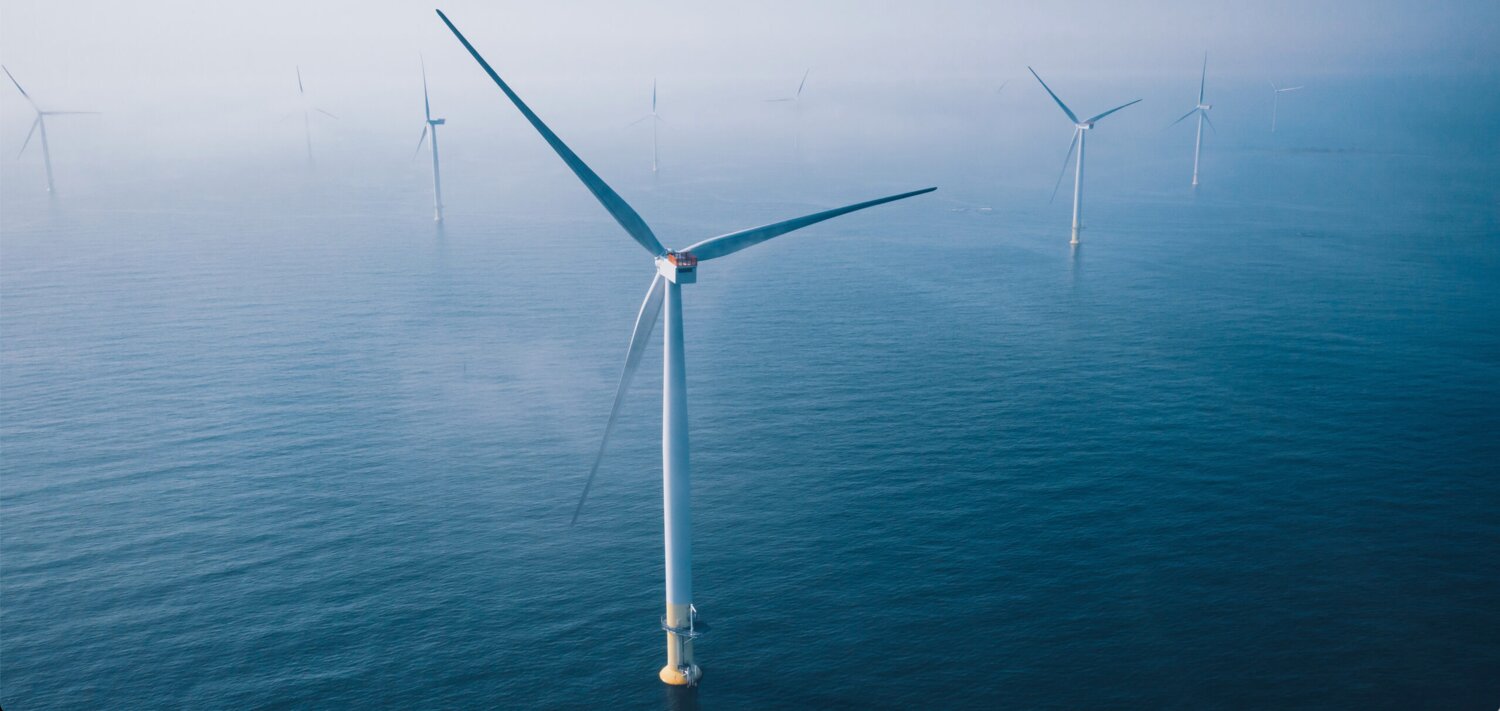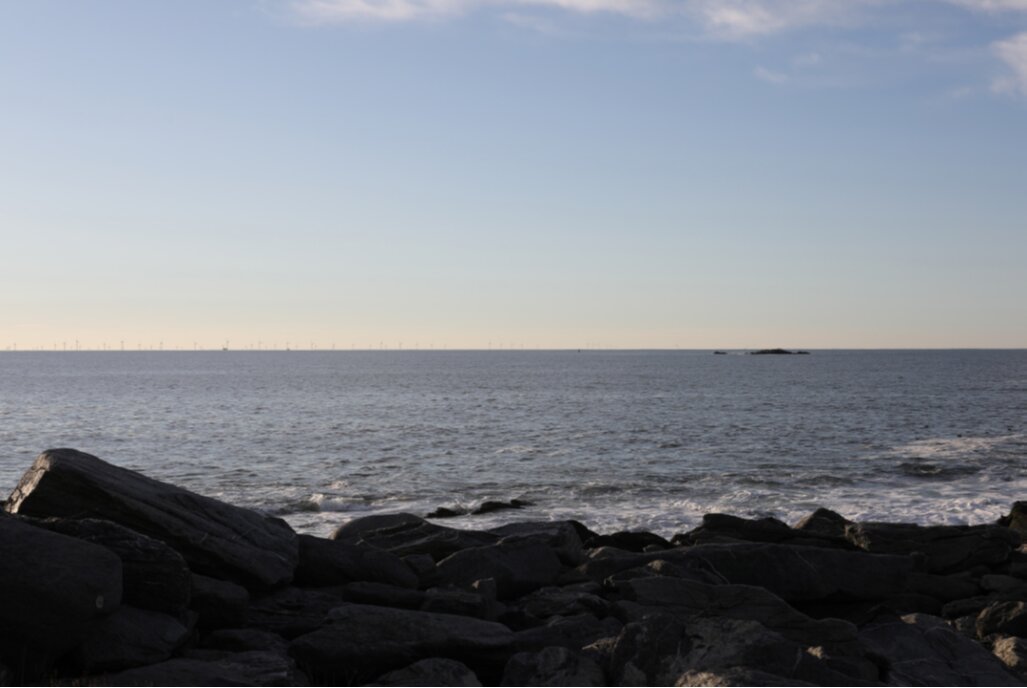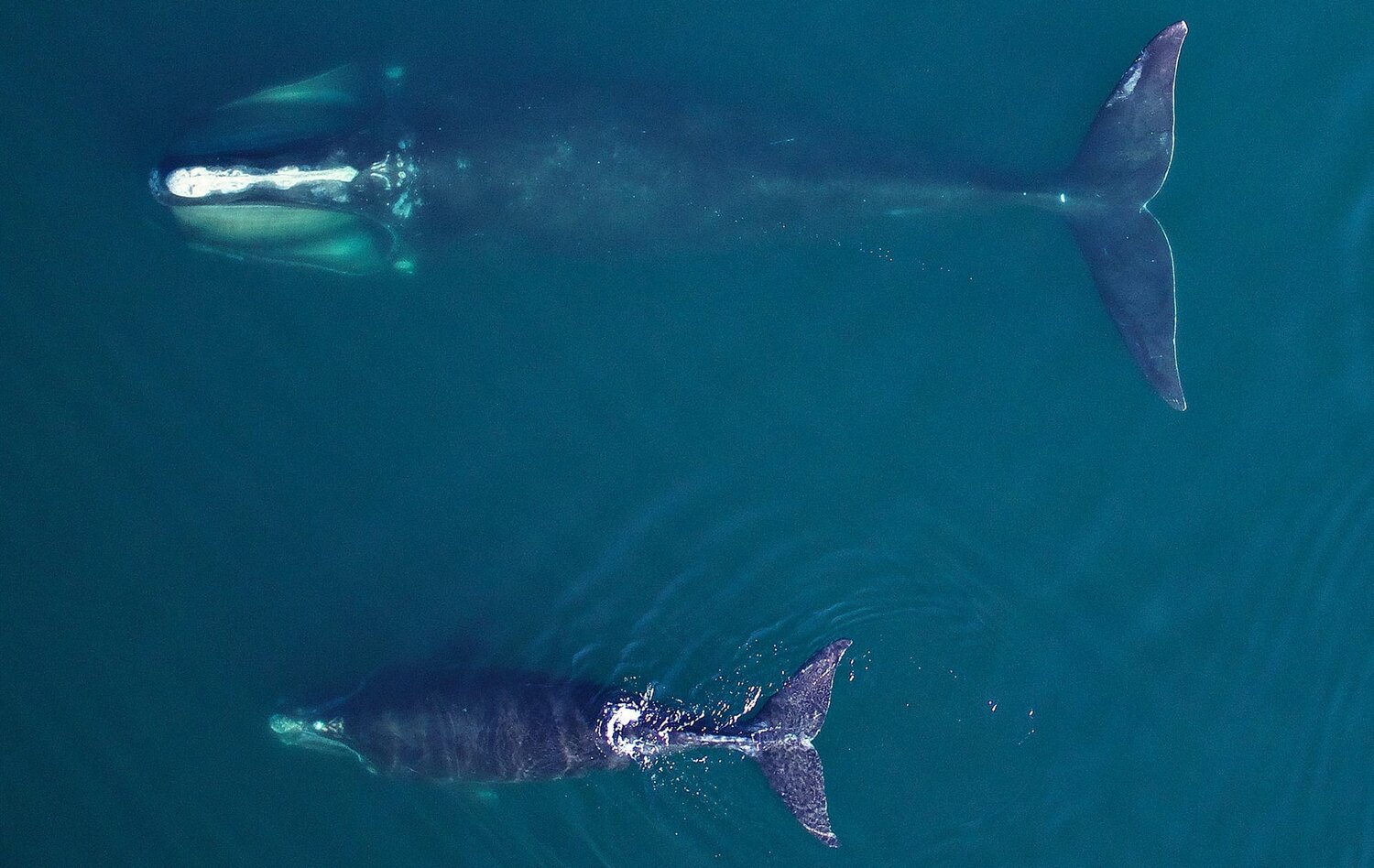- SATURDAY, APRIL 27, 2024
Two sides to the wind farm debate
Ocean perils vs. much-needed renewable energy
A Rhode Island citizen activist made a powerful pitch about the dangers of offshore wind projects to a mostly supportive audience in Westport, Mass., on Tuesday, Sept. 19, and a small group of …
This item is available in full to subscribers.
Please log in to continue |
Register to post eventsIf you'd like to post an event to our calendar, you can create a free account by clicking here. Note that free accounts do not have access to our subscriber-only content. |
Day pass subscribers
Are you a day pass subscriber who needs to log in? Click here to continue.
Two sides to the wind farm debate
Ocean perils vs. much-needed renewable energy

WESTPORT — A Rhode Island citizen activist made a powerful pitch about the dangers of offshore wind projects to a mostly supportive audience in Westport on Tuesday, Sept. 19, and a small group of pro-offshore wind observers pushed back afterward, accusing the speaker of bias and distortion.
The speaker at the event, Lisa Knight, is one of the founders and leaders of Green Oceans, a Little Compton-based citizens group that is using media, small-group meetings, and promises of forthcoming legal actions to block wind projects in development off the coast of Rhode Island and Massachusetts.
She said, “People believe what they want to believe,” a comment that was heartily seconded by a wind-farm supporter.
Knight’s comments were delivered to a live audience and were also livestreamed on YouTube, one of a series of gatherings Green Oceans had hosted since the start of this year. She touched on many topics, including the fossil fuel industry origins of some wind developers; potential harms of wind farms to the ocean environment and animals; dangers to fishermen; costs of electricity created by wind power; and the permitting decisions of federal and state agencies that, she said, are giving wind developers a free pass.
About 60 people attended the talk, and a few dozen more watched online.
During the Q&A period, a man in the audience said, “Listening to this, I don’t know who the bad guys are.” Knight replied, “They are the same people,” pursuing her earlier theme that wind farm developers are former oil industry people.
At present, the South Fork and Vineyard Wind projects are permitted and under construction from bases in Long Island, N.Y., and New Bedford, Mass. Revolution Wind, to be constructed from ports in Rhode Island, has received most of its permits and hopes to begin construction next year. SouthCoast, Sunrise, Revolution 2, and other wind projects are grinding through the permitting process. Regardless of where the wind-generated electricity makes landfall, the turbines will be built in a giant patch of the ocean, or wind lease area, southeast of the coast of Martha’s Vineyard.
Stephen Porder, a professor at Brown University, the associate provost for sustainability, and part of a group of pro-wind industry activists, watched the session online and commented afterward. He said Knight’s talk was riddled with examples of cherry-picking data “to make it appear that something is happening when it is not.” Porder also said Knight often would “mistake correlation with causation,” meaning that she assigned causes to events that simply happened at the same time.
“I’m getting older and the planet is getting warmer, but global warming is not causing me to get old,” Porder said, by way of illustrating many of Knight’s arguments.
Who are these wind farmers?
Knight’s first topic was the background of wind farm developers. She ticked off the names Ørsted — developer of the Block Island and Revolution Wind farms — Equinor, British Petroleum, Avangrid, and Shell Oil, and said, “All of these are linked to the fossil fuel industry. Big Oil hid the effects of the fossil fuel industry for decades and these are now the wind companies.”
Porder’s response: “The fossil fuel companies have done nothing to earn the trust of the public … they have been really bad actors.” But, he added, “If Ørsted wants to transition and help us solve this global warming problem, I am happy it is doing this.” He said he would say the same of an oil drilling company that helped drill for geothermal power. “No matter who builds the turbine, offshore wind will reduce emissions.”
An unidentified man in Knight’s Westport audience also defended Ørsted. “It is inaccurate and disingenuous to call Ørsted a gas and oil company,” he told the group. “It is the single best company making a major transformation away from fossil fuels and toward renewables.”
Knight said there is “circumstantial evidence” that “renewables have not made a dent in our dependency on fossil fuels.” At one point she said, “There has been no study that uses empirical data that any wind farm has reduced carbon dioxide emissions or reduced the impact of fossil fuels.”
Again, Porder disagreed, calling Knight’s claim an example of cherry-picking data to her liking. He said the respected Intergovernmental Panel on Climate Change (IPCC), which is the United Nations body for assessing the science related to climate change, “has rated wind and solar energy as the biggest and least expensive ways to reduce emissions and mitigate climate change.”
Porder said Knight repeatedly cited facts that had no relationship to one another. For instance, Porder quoted Knight as saying Texas produces 37 gigawatts of wind power but still emits more carbon dioxide than all of New England. As far as carbon dioxide emissions are concerned, Porder noted that Texas uses one-seventh of all the energy and consumes 12 percent of all electricity in the United States, so a comparison with New England emissions is irrational. “Both of those things are true, but they are not related to each other,” he said.
How big are they?
Knight emphasized the enormity of the wind farms, based on the supposition that all nine proposed projects are built. She said 1,000 turbines up to 800 to 1,100 feet tall would cover a total of 1,400 square miles of ocean.
The Revolution and Sunrise wind projects have reduced their original number of turbines and shifted turbine locations to avoid sensitive fish habitats on Cox’s Ledge, a rich fishing ground. But, Knight said, “Turbines will cover almost the entire region of Cox’s Ledge.”
Knight showed two different sets of photos designed to be simulations of the view of wind turbines from land. One set showed the turbines as small on the horizon, and the other set showed a cluster of giant, looming towers elbowing each other across the skyline.
Ørsted, Knight said, “has two sets of simulations of the view, one for the government and one for the public.”
David Monti, a Rhode Island charter boat captain who supports wind energy and who also watched the discussion online and commented after, bridled at the pictures Knight showed.
“The photos shown were retouched and misleading. I am on the water all the time in the area of Block Island Wind Farm and last week at the South Fork wind farm and the photos shared do not look anything like when we approach them. Most passengers on my vessel over the years like the wind farm and ask to go close to them; they are in awe of them and say they are majestic looking.”
Monti said wind farms do not, in his view, threaten fish habitat on Cox’s Ledge. “Saying the wind farms will kill fish and habitat at Cox’s Ledge is false. Fish abundance of cod and black sea bass are greater in the Block Island Wind Farm today than before construction compared to control areas outside the wind farm. … Peer-reviewed studies in Europe show fish abundance is greater in wind farms than in control areas outside of wind farms.”
Monti said the footprint of the wind farm lease area is designed to avoid the most sensitive area of fish habitat in Cox’s Ledge. “The whole map (of the wind lease area( looks like Battlestar Galactica,” Monti said. “That’s because they removed (from the lease area) sensitive areas of Cox’s Ledge. People say (the turbines( are being built on Cox’s Ledge. They are not. The whole lease area was designed by BOEM and approved by the (R.I. Coastal Resources Management Council) to avoid sensitive fishing areas on Cox’s Ledge.”
Porder, of Brown University, also said Knight’s description of wind turbines crowding the Outer Continental Shelf was exaggerated. The photos that Knight presented, he said, made the ocean look “like a parking lot.” He said if you placed a map of the wind lease area on a computer screen and inserted dots for the turbines, they would be too tiny even to see.
Knight expressed doubt that renewable energy sources would, in fact, replace the need for fossil fuel. She said, “People think one kilowatt-hour of wind electricity will replace one kilowatt-hour of fossil fuels electricity,” but added that wind power would rely on a “secret friend” — natural gas — to keep our lights burning when wind is not blowing.
Porder attempted to reassure. “Right now, fossil fuels provide a backup to wind and solar,” he agreed, “but we are working on other (electricity( storage solutions. We need to start now and make fixes as electricity provided by renewables is becoming increasingly viable. This is changing fast and it is changing in favor of renewables and storage.”
He emphasized that wind power creates 98 percent less greenhouse gas emissions than fossil fuels.
More about whales
In the wind farm debate, there is no bigger arena for cherry-picking information and mixing correlation with causation than the topic of the impact on whale injuries and deaths, a fiery debate that has raged for years.
Since 2017, there has been a high incidence of whale deaths along the East Coast, a pattern that scientists call an unusual mortality event (UME). Since 2016, 208 humpback whales have been found either dead or stranded along shores from Maine to Florida. Since 2017, 115 North Atlantic right whales have been found injured, ill, or dead.
People opposed to offshore wind farms declare that whales are being hurt or gravely disoriented by sound waves projected from boats to the seafloor to explore locations for wind farms.
Knight quoted to the group a sentence from NOAA to the Bureau of Ocean Energy Management (BOEM) — both of which are involved in permitting wind farms — that wind farms present “a high risk of population level impact” to marine mammals. Knight said this phrase was equivalent to “extinction,” a word that NOAA did not use.
She quoted a NOAA statement from the Revolution Wind draft environmental impact statement that said the wind farm could cause “major adverse” impacts on the environment, and added, “BOEM ignored NOAA’s warnings.”
Knight said NOAA granted more than 1,000 permissions to offshore wind developers to harm whales, in a process known as “incidental take” or “incidental harassment” authorizations. The level A or level B authorizations allow developers to cause some degree of harms — ranging from disturbance to excessive noise to death — to animals during the normal course of installing the wind turbines.
Wind farm opponents often claim the very need for incidental take and incidental harm permissions proves that wind farms harm whales. Marine scientists often counter this argument by saying occasions of takes or harassment often amount to little more than animals moving away from noisy construction activity and then moving back when noise goes away.
Whale scientists, including several from the University of Rhode Island, say the bottom-testing sound waves are not nearly strong enough to harm whales, and far less strong than sound waves used to explore offshore oil platform construction. They say that most whale injuries and deaths that have been analyzed largely show evidence of entanglement in fishing gear and strikes from boats.
The excessive number of whale deaths since 2017 are from a variety of causes, some understood and some not, but not from wind farm work, scientists say. Also, the whale population began its decline before there was any commercial study of wind farm development on the New England coast.
Robert Kenney, a marine research scientist emeritus at URI, said there have been up to three different unusual mortality events in the Northeast and “the causes are not necessarily all the same. The cause is not injury from the HRG (high resolution geophysical( surveys. There is absolutely zero evidence for that.”
Referring just to the North Atlantic right whale, he said, “There were only two big years for dead right whales — 2017 and 2019. Without those there never would have been a UME declaration. Most of those were in the Gulf of St. Lawrence. The whales showed up in a place where they really hadn’t been much before, and got entangled in snow crab gear and killed by ship collisions. There is no mystery.”
Kenney pointed to the NOAA 2022 Stock Assessment Reports. “Table 3 is a very long and depressing list of every dead and seriously injured right whale from 2016 to 2020. Scan down the ‘assigned cause’ column … all you’re going to see is ‘EN’ or ‘VS’ for entanglement or vessel strike. Not a single one says ‘acoustic trauma’ or ‘natural causes.’”
Some observers say more whales are being hurt and killed because they are pursuing prey closer to shore and into the paths of an ever-increasing amount of commercial shipping traffic off the East Coast. These behavior changes may be happening because of the warming ocean waters.
Monti, the charter fisherman, said, “Whale mortality and wind farms are not related, so NOAA says. They have studied whale mortality for years and there is no correlation. Whale mortality is higher today most likely because of climate change, as warming water has enhanced our bait profiles.”
Litigation in the wind
Not surprisingly, the Q&A session after Knight’s talk roamed far and wide across the topic and concerns of listeners.
The first questioner pulled Knight straight into a mention of litigation by asking about research into these topics by universities. Knight mentioned a “Brown University professor” who had his students do a study of Green Oceans. She was referring to a report by the Climate and Development Lab at Brown. Knight called the report “defamation” and said, “We have hired a lawyer to help with that.”
(Earlier in the session Knight mentioned briefly that Green Oceans is in ongoing talks with the state attorney general and at least two more attorneys to work on pending legal action. She mentioned briefly that the Coastal Resources Management Council had been “derelict” in its duty to enforce the state’s Ocean Special Area Management Plan.)
An audience member asked if Knight knew of any comparison of marine mammal fatalities prior to the past 20 to 40 years, and whether the topic has been researched in Europe. Knight replied that the Navy has known for a long time that “sonar hurts whales.” Knight also said, “I don’t have data about the direct relationship between whale deaths and sonar. That data does not exist.”
A questioner asked where Greenpeace, the Conservation Law Foundation, and other environmental groups stand on the topics of possible harms to the ocean environment. Knight replied, “Everyone has bought into the narrative that wind power works; they want to work with the wind companies.”
One audience member, who had previously defended Ørsted’s transition to wind power, said, “Wind power is a huge part of the climate change solution. … What is critical is urgent action on all renewables.”
Knight said her concern is for the well-being of the ocean. “The ocean is a sick patient right now and should not shoulder the burden of our environmental needs.”
Monti, the fisherman, said, “Residents, tourists, renters, and homeowners like the wind farms by and large as they show how Rhode Islanders are eco-friendly and buying into renewable energy, which is a positive thing.”
This article was reprinted with permission from ecoRI News (https://ecori.org). The Pulitzer Center supported this story through its Connected Coastlines project.
Keywords
Wind energy, wind farms, SouthCoast Wind, Revolution Wind, Green OceansOther items that may interest you













